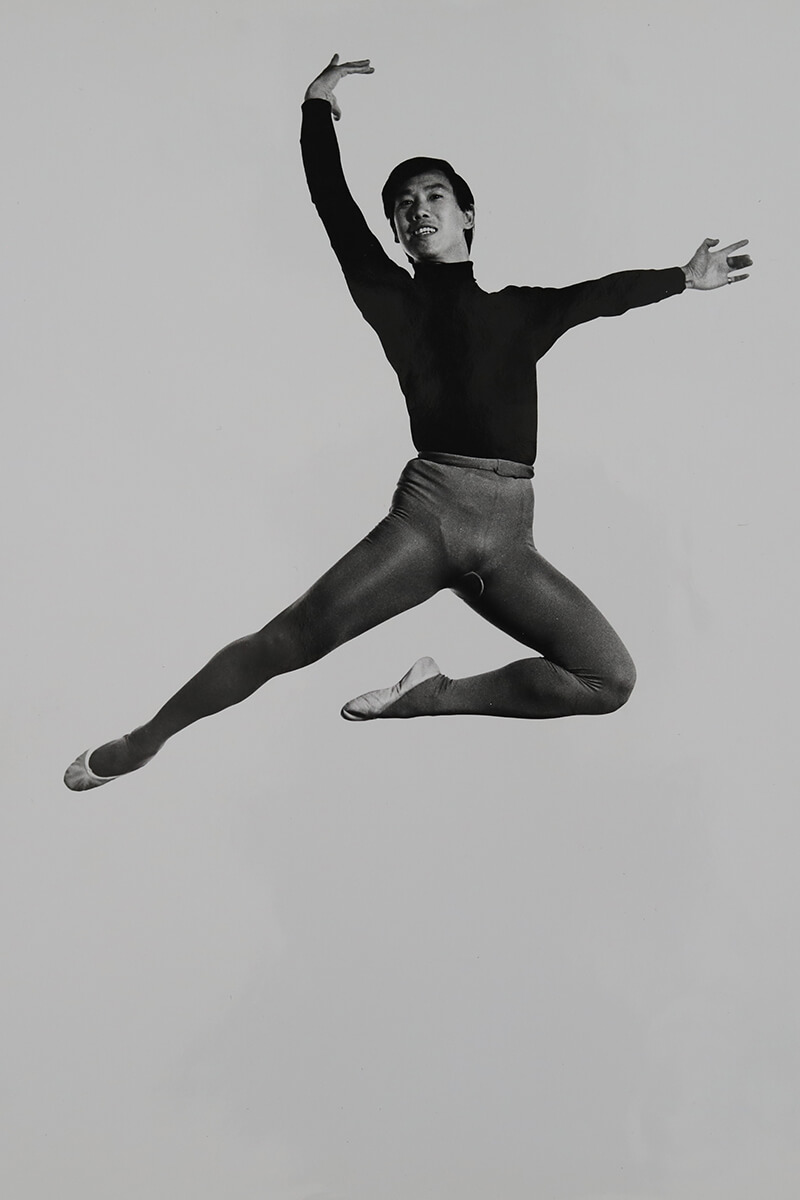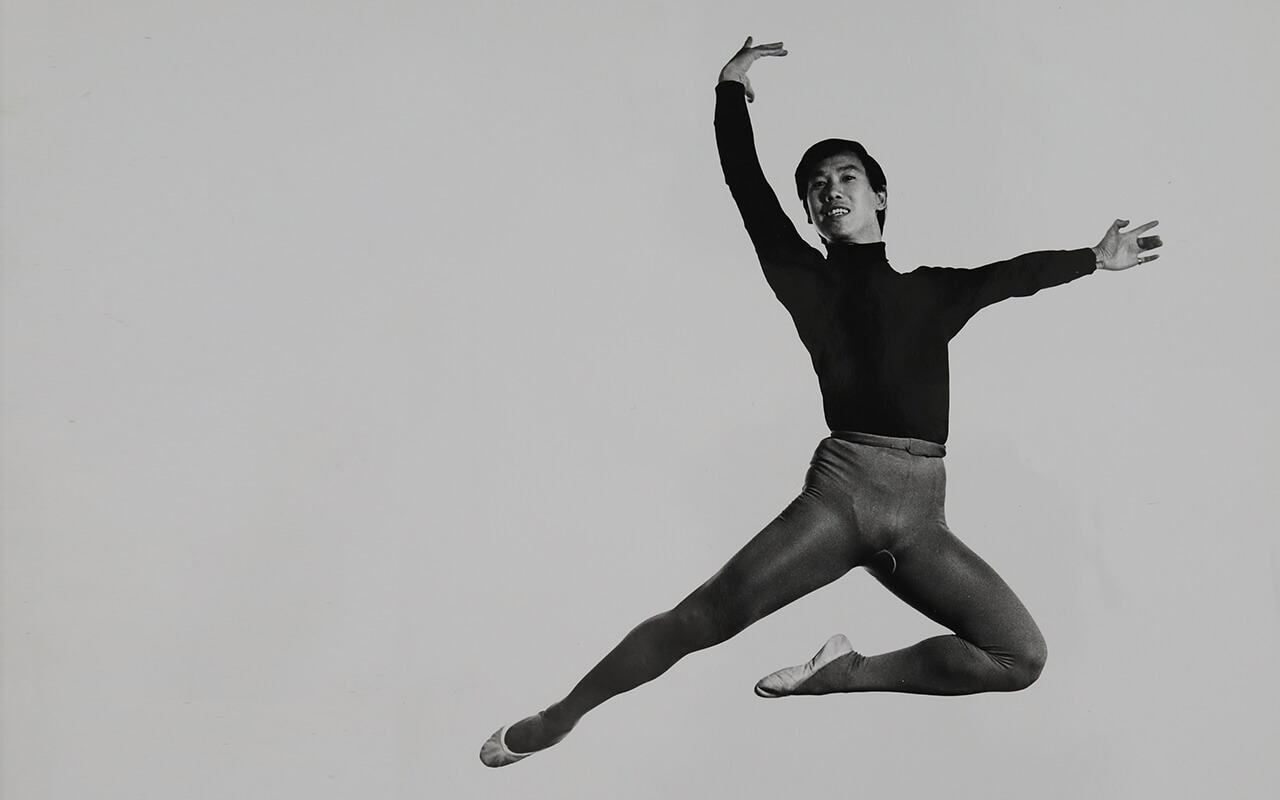How a pioneering dancer was hiding in plain sight behind a Four Queens blackjack table
He was hand-picked by George Balanchine for the choreographer’s first staging of “The Nutcracker” with the New York City Ballet.
On Broadway, he worked with Gene Kelly and an up-and-coming director by the name of Hal Prince.
Over time, though, the dance community lost touch. George Lee hadn’t been heard from in more than 40 years.
He wasn’t hiding. He had no idea anyone was looking for him — or why they would be — until reporter-turned-documentarian Jennifer Lin tracked him down.
Lee, now 89, was where he’d spent most of the past four decades: dealing blackjack at the Four Queens.
‘I’m nobody’
In late November 2022, Lin was researching Balanchine’s “Nutcracker” at the New York Public Library for the Performing Arts when she came across a photo of Lee in the original production. She was intrigued, given that there were painfully few ballet dancers of color in 1954.
“I became obsessed with finding him to find out what happened to him,” she says during a phone conversation. “If you’re good enough for George Balanchine, you are good.”
Lin leaned on the skills she acquired during her 31 years as a reporter for The Philadelphia Inquirer and located the dancer, originally known as George Li, a month later in Las Vegas.
“He said to me, and this broke my heart,” Lin recalls of their first conversation, “ ‘I’m nobody. I was not a big ballet dancer. I was in “The Nutcracker,” but I’m nobody. So why are you interested?’ ”
They spoke for an hour during that phone call. Stunned by Lee’s story, she and a camera crew flew in to interview him in February 2023. Lee, she says, “still wasn’t quite convinced that this wasn’t an elaborate scam.”
That interview inspired the documentary “Ten Times Better,” which will be celebrated Tuesday night at the Beverly Theater.
Dancing for rice
Lee was born in 1935 to a Chinese acrobat and a Polish ballerina living in Hong Kong. Six years later, Lee and his mother, Stanislawa, relocated to Shanghai. In 1945, Lee’s father was on his way to see them when he was killed in a car crash.
By that time, Lee already was an accomplished dancer. At the age of 5, he began joining Stanislawa for her morning ballet exercises. As a 7-year-old, he was performing in nightclubs, for which he was paid in rice. His legs were still too small to walk long distances, so Stanislawa carried him home on her back each night.
In 1949, ahead of the communist takeover of China, Lee and his mother were evacuated by the United Nations to the Tubabao refugee camp in the Philippines. To this day, he has trouble with acidic foods because of all the pineapple juice he drank there. Lee and Stanislawa remained in the camp, living in a tent, longer than they should have because Australia, where many of the refugees were being resettled, accepted her but not him. The country, he was told, wasn’t taking Asians.
Finally, on Jan. 7, 1951, Lee and Stanislawa left for America aboard the USNS General W. G. Haan. A friend of his father had sponsored them to come to New York. Once there, that friend took Lee to the prestigious School of the American Ballet for an audition, despite the fact that the now 15-year-old hadn’t danced for the past two years.
“I hadn’t taken class. I was out of shape,” Lee recalls over coffee at the Four Queens. “I said, ‘Oh, gee.’ I was a bit nervous. They told me, ‘You go to the advanced class.’ That’s even worse. That really knocked me out.”
He aced the audition and won a full scholarship.
“The class was nothing for me,” Lee says, proudly. “It was like, ‘Snap.’ ”
Moving beyond ballet
When he was growing up, most of the dancers in China were from Russia. Lee’s family spoke Russian, along with some Polish, around the house. When he arrived at the School of the American Ballet, Lee surprised some of his instructors, as well as Balanchine, the school’s founder, by addressing them in their native tongue.
In 1954, when Balanchine was working on “The Nutcracker,” he had Lee come to his studio.
“He asked me, ‘What can you do good?’ ”
Lee spent 15 minutes performing for the master, and some of those skills were incorporated into Balanchine’s choreography for the Chinese tea divertissement that’s still being performed each year. Despite earning rave reviews that season, Lee was denied a place with the ballet company. The self-described “little shrimp” was told he was too short.
Needing to put food on the table, Lee turned to Broadway despite its reliance on jazz dancing, with which he was unfamiliar.
Following an audition for 1958’s “Flower Drum Song,” the Rodgers and Hammerstein musical about Chinese immigrants torn between their heritage and American culture, the show’s director caught up with him and talked him into joining the show. “He said, ‘You learn something new, and you get paid besides that,’ ” Lee recalls. The director’s name? Gene Kelly.
Of the shows he danced in, Lee’s favorite was “Baker Street,” which opened and closed on Broadway in 1965. Based on the Sherlock Holmes stories, the musical was overseen by Hal Prince, who would go on to direct the likes of “Cabaret,” “Sweeney Todd” and “The Phantom of the Opera” en route to his record 21 Tony Awards.
A new life in Las Vegas
“Flower Drum Song” brought Lee to “The Ed Sullivan Show,” where he performed with the rest of the cast, then it took him around the country on a national tour. A 1961 production of the show at the Thunderbird, where the Fontainebleau now stands, led him to Las Vegas.
When that closed, Lee stuck around for the Thunderbird’s “South Pacific” but turned down a job with the production of “High Button Shoes” that followed. Needing a break from the grueling seven-days-a-week schedule, Lee went home to New York.
He was back on the Strip in 1970 as one of Carol Channing’s “10 Stout-Hearted Men,” which had a four-week run at the Riviera. He returned for good in 1980, appearing in “Alcazar de Paris” at the Desert Inn.
Lee danced at night and went to dealer school during the day. A friend’s husband, who dealt blackjack at the Four Queens, convinced him it was a good job to fall back on. When “Alcazar de Paris” closed after four months, Lee weighed his options.
“There’s no use to go back to New York, because they’re all different now. All the shows, no more jazz now. They’re all disco,” Lee says of his thought process back then. “Disco is really, like, you train all your life, and then suddenly you go there and wiggle around. No, no, no, no. I can’t do that.”
The night before he was to return to New York, despite the prospects of disco dancing, he was offered a job at the Four Queens. His mother was horrified, thinking that being a dealer meant he was part of the mob.
10 times better
You can’t talk about George Lee without talking about his mother.
Stanislawa smacked her young son when he slouched during meals and demanded he always hold his fork and knife in the proper hand.
Lee doesn’t have many memories of his father, aside from the way the acrobat taught him to perform handstands. He’d put the boy in that position, step outside for a smoke, and insist Lee remain that way until he finished his cigarette.
It sounds like everyone was strict with him.
“Yeah, but they were good strict,” Lee says. “They mean well. They wanted me to do (things) the right way.”
On Broadway, “Flower Drum Song” would finish around 11 p.m. Stanislawa wanted him home by 11:30. When she visited Lee in Las Vegas, he’d return from the Thunderbird around 2 a.m., hoping to unwind. Stanislawa would have food waiting and tell him to eat, then go to bed. Lee was nearly 30 years old.
“She thinks I’m doing OK,” Lee says of her visits to watch him on Broadway. “But if there’s something wrong, she goes home and tells me, ‘You did this wrong or that wrong.’ She’s my best critic.”
Of that criticism, he insists, “That’s why I became so good.”
Lin’s documentary takes its title, “Ten Times Better,” from something Stanislawa drilled into her son’s head. When he moved to America, she’d say, he would have to be 10 times better than white people to succeed.
Coming out of his shell
“Now I can go back, and I can see what I have done,” Lee says of the film. “I shouldn’t just close it off. Jennifer opened me up.”
He didn’t speak of his previous career for decades. Not to co-workers, not to friends. Through Lin’s attention, he’s become less reticent.
After 40 years of dancing and 40 more of standing behind a blackjack table, Lee’s knees finally gave out three years ago. He has arthritis in both of them that makes walking difficult. The condition eventually led to his being able to earn a living while sitting down for the first time in his life.
“I need to work, because I need to pay the bills,” Lee says. “You know, Social Security is not enough.” As celebratory screams drift over from a bank of slot machines, Lee takes notice. “Who knows,” he says. “Maybe someday I can hit something big.”
He and Lin have developed a familial bond over the past year. Lee jokes that she knows his story better than he does.
“He could easily be a very bitter person,” the filmmaker says. “He could be still upset that he didn’t have a ballet career, that he didn’t get hired by the New York City Ballet. There’s no bitterness there. There’s a resiliency and an optimism that, I hope, comes through in the movie.”
During his dancing days, people often said Lee was happy-go-lucky. “And I’m always lucky, and I’m always happy,” he says. “I do my job, I go home. That’s it.”
No longer hidden
“It’s just a little film. It’s only 30 minutes,” Lin says. “But to me, it’s just a piece of history — Asian, Asian-American history — that was hidden.”
That’s certainly no longer the case.
“Ten Times Better” premiered Feb. 10 during Film at Lincoln Center’s Dance on Camera Festival. A few days prior, Lee and Lin took part in a discussion at the library where she first encountered that photo. The audience, which included leaders of the New York City Ballet and the School of American Ballet, filled a 200-seat auditorium and spilled into the lobby.
Lee soon observed a class at his old school and went backstage at the ballet. That’s where he met Chun Wai Chan, who in 2022 became the first principal dancer of Chinese descent in the 74-year history of the New York City Ballet.
“They treated him like a VIP, so I hope George understands that he really was a pioneer,” Lin says. “And it’s nice that he’s getting his moment at center stage.”
After all that — the documentary, the reflection, the warm reception — does Lee finally feel like that pioneer?
“I still somehow don’t believe it,” he admits. “It’s so hard for me to believe it, because I’m just a simple guy.”
Contact Christopher Lawrence at clawrence@reviewjournal.com or 702-380-4567. Follow @life_onthecouch on X.
The Beverly Theater will host the Las Vegas premiere of "Ten Times Better" at 7:40 p.m. Tuesday.
A complimentary reception featuring light bites from Delilah at Wynn Las Vegas will begin at 6:30. George Lee and filmmaker Jennifer Lin will discuss the movie following the screening.
Tuesday's event is just the documentary's second public screening. After that, it will head out on the festival circuit. Additional ways of seeing "Ten Times Better" will be announced later.
All tickets for Tuesday's free screening have been claimed, but check thebeverlytheater.com.





















